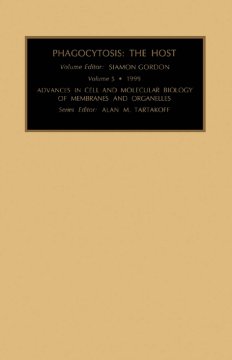
Additional Information
Book Details
Abstract
An accompanying volume (Volume 6) in this series presents strategies of cellular invasion from the viewpoint of the microbe.
This filed of study is growing rapidly after a somewhat slow start over recent decades. This collection of invited chapters attempts to reflect current research, and brings together cell biologists, microbiologists and immunologists with disparate interests. However, there is a certain unity, even repetition of key themes, hopefully like a symphony rather than a boring catalogue. It will be evident that editorial bias favors intracellular paratism and medically important organisms. The neutrophil is far more than a supporting player to the macrophage, and some attempt is made to remind the reader of some of its unique skills. To retain a manageable size, the emphasis is on relatively early events such as mutual recognition, cell entry, and response, rather than on longterm changes in gene expression by either host cell or pathogen. Viruses are excluded not because of lack of importance but because of somewhat different research approaches, although it is cytogenes, share common strategies in invasion and intercellular spread.
Philippe Sansonetti
Phagocytosis: the Host excellently reflects the revolution that has occurred in this field. In other words, the science of phagocytosis is now dominated by an analytical approach based on deciphering the signals that carry out each of the critical steps of the process. Edited by a master of the discipline, in 21 chapters, this book - with great justice dedicated to the late Zanvil A. Cohn - covers the molecular and cellular aspects of phagocytic processes in a logical progression. The best specialists in the field have risen to the challenge.
Journal of Cell Science
